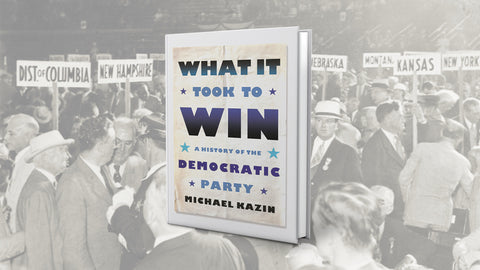
‘What It Took to Win: A History of the Democratic Party’ Review: Learn what makes them tick
Michael Kazin’s immediately indispensable new history of the Democratic Party succeeds on every imaginable front. A compelling blow-by-blow institutional biography of the country’s oldest mass political entity, What It Took to Win offers thoughtful and persuasive insights into the party’s social and political culture. Simultaneously portraying major figures and everyday people, Kazin describes in detail the ways in which the party has failed, major and minor, recently and in the distant past. Just as compellingly, he prescribes a historically rooted path forward for a party that has been treading electoral water for half a century. Most significantly, Kazin writes in the voice of that rare contemporary historian who believes institutions genuinely shape events. Few institutions, Kazin demonstrates, have formed the country more than the Democratic Party.
Kazin synthesizes two generations’ worth of scholarship to interrogate the White supremacy baked into the party’s 19th-century origins. The anti-monopolism of the party of Jefferson and Jackson clearly coexisted with a vision of racial hegemony that pitted the party’s original contingent of White farmers and artisans against potential allies among African American workers. In the book’s most compelling chapter, “Cosmopolitans in Search of a New Majority,” Kazin shows how slight, electorally and legislatively, the dividends of the Democrats’ chumminess with Silicon Valley types have been. The Democrats have won over many new Americans or previously marginalized groups, but the party’s reach exceeds its grip, particularly on White working- and middle-class Americans, especially men. The result has been a party with an educated elite and several smaller bases but lacking a broad vision articulable to voters who were neither professionals nor members of the “ethnocultural mélange” that has become so strongly associated with the party.
Writing as a lifelong Democrat in the wake of Donald Trump’s 2016 election, Kazin calls for a reawakening of the big-tent economic populism that made the Democrats a longstanding majority party both in the Jacksonian period and in the era of the New Deal coalition. To reclaim that status, the Democrats must win over voters who see an economic system that is not working for them—not by embracing socialism but by presenting a brand of capitalism that gives the disenfranchised a fair shake. The only ranks of the party’s existing base that this vision may not delight reside in the republic of Big Tech. Kazin is far from the first observer to make this point. Organized labor’s latter-day reinvigoration and Social Democrat Bernie Sanders’s popularity with much of the country’s traditional industrial base in the 2016 and 2020 primaries suggest this may be in the offing.
Kazin’s contribution is to situate his insight within the organization’s larger story and trace that awareness to the Democratic Party’s origins. —Clayton Trutor, a regular contributor, teaches History at Norwich University in Northfield, Vermont. His book Loserville: How Professional Sports Remade Atlanta and Atlanta Remade Professional Sports is available now from the University of Nebraska Press.
This book review appeared in the Winter 2023 issue of American History magazine.
What It Took to Win: A History of the Democratic Party
By Michael Kazin
Farrar, Strauss, and Giroux, 2022
If you buy something through our site, we might earn a commission.
historynet magazines
Our 9 best-selling history titles feature in-depth storytelling and iconic imagery to engage and inform on the people, the wars, and the events that shaped America and the world.
